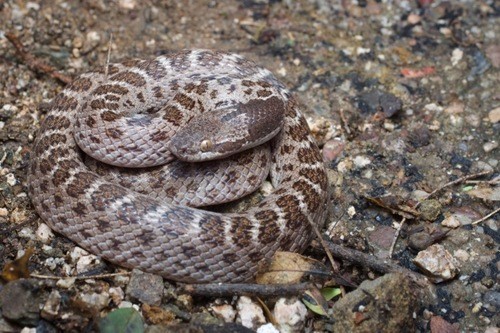Hypsiglena chlorophaea chlorophaea
A species of Night snakes Scientific name : Hypsiglena chlorophaea chlorophaea Genus : Night snakes
Hypsiglena chlorophaea chlorophaea, A species of Night snakes
Scientific name: Hypsiglena chlorophaea chlorophaea
Genus: Night snakes
Content
Description General Info
 Photo By sullivanribbit , used under CC-BY-NC-4.0 /Cropped and compressed from original
Photo By sullivanribbit , used under CC-BY-NC-4.0 /Cropped and compressed from original Description
The hypsiglena chlorophaea chlorophaea is renowned for its individualistic and nocturnal nature, preferring solitude and darkness. It employs a remarkable survival strategy of feigning death, showcasing an exceptional example of thanatosis in the wild. Equally fascinating is its broad dietary range, encompassing a variety of arthropods and small vertebrates, thereby playing a crucial role in maintaining the ecological balance within its habitat.
General Info
Lifespan
5-10 years
Diet
Hypsiglena chlorophaea chlorophaea prefers a carnivorous lifestyle, with a predilection for small lizards. Its adaptable dietary habits also feature small rodents, birds, and arthropods where lizards are scarce.
Appearance
Hypsiglena chlorophaea chlorophaea is a small to medium-sized snake with a cylindrical body. The skin has a rough texture with its defining scale pattern. It mostly presents a grey-brown coloration with double rows of dark spots along the body. Younger snakes often have brighter patterns, which dull with age. The snake's head is wider than the neck, and the eyes have vertical slits.
Behavior
Hypsiglena chlorophaea chlorophaea is a primarily nocturnal reptile, emerging from its concealment at dusk to hunt for food such as small reptiles and insects. It is recognized for its defensive behavior of feigning death when threatened. Showing a solitary nature, territory is marked using pheromone trails. Predominantly ground-dwelling, it utilizes its adaptive coloration for camouflage within its desert environments.